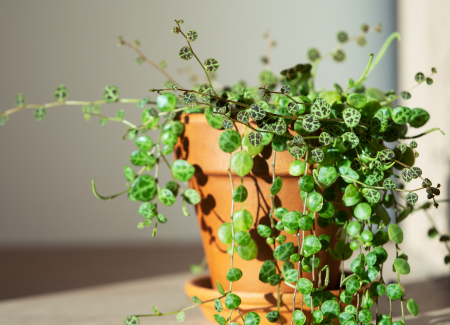Caring for Your String of Turtles Plant
The String of Turtles plant, scientifically known as Peperomia prostrata, is a delightful addition to any plant enthusiast's collection. Its unique, turtle shell-like leaves make it a charming and eye-catching indoor plant. While it is relatively easy to care for, understanding its specific needs can help ensure it thrives in your home. This guide will delve into the essentials of caring for your String of Turtles, including lighting, potting, watering, and more.
Lighting Needs: Bright Indirect Light
String of Turtles plants prefer bright indirect light to maintain their vibrant coloring and healthy growth. While they can tolerate some direct sunlight, too much can scorch their delicate leaves. Therefore, it's best to place them near a window where they receive ample sunlight filtered through a curtain. If you notice the leaves losing color or becoming leggy, it might be a sign that your plant needs more light.
Can String of Turtles Handle Full Sun?
Full sun is generally too intense for String of Turtles. The leaves can become sunburned, leading to unsightly brown patches. If placing them outside, ensure they are in a shaded area where they receive indirect sunlight. This plant thrives best when its lighting needs are carefully balanced.
Understanding the Growth Rate and Maturity
One of the charming aspects of the String of Turtles is its slow growth rate. This plant takes its time reaching full maturity, which can span several years. Its slow pace means it doesn't require frequent repotting, making it a low-maintenance choice for busy plant parents.
The Importance of a Suitable Potting Mix
Choosing the right potting mix is crucial for your String of Turtles. A mix that allows for good drainage is essential to prevent root rot, a common issue with overwatering. Consider using a cactus or succulent mix, or create your own by combining potting soil with perlite or sand to enhance drainage. This will keep the plant's root system healthy and robust.
Watering: Finding the Right Balance
Watering your String of Turtles requires a balanced approach. Since this plant stores water in its leaves, it can tolerate periods of dryness better than overwatering. Allow the top inch of soil to dry out between waterings, and adjust the frequency based on the season. During the growing season, which typically occurs in spring and summer, you may need to water more frequently.
Avoiding the Perils of Root Rot
Overwatering can lead to root rot, a serious condition that can kill your plant. Ensure your pot has drainage holes, and never let the plant sit in water. If you suspect root rot, remove the affected roots and repot the plant in fresh soil.
Temperature and Humidity: Creating the Perfect Environment
String of Turtles plants thrive in temperatures between 65°F and 80°F. They also prefer higher humidity levels, which can be achieved by misting the plant or placing a humidifier nearby. Be cautious of placing the plant near drafts or heating vents, as sudden temperature changes can stress the plant.
Dealing with Low Humidity
If your home tends to be dry, especially in winter, consider grouping your String of Turtles with other plants. This creates a microenvironment that raises humidity. Alternatively, a pebble tray filled with water can also help maintain adequate humidity levels.
Hanging Baskets: An Ideal Display Option
String of Turtles plants are perfect for hanging baskets, where their trailing vines can cascade elegantly. Ensure the basket allows for good drainage and consider the light exposure in its hanging location. Hanging baskets can be a stunning way to display the plant's unique foliage and growth habit.
Common Pests: Watch Out for Spider Mites
Like many houseplants, the String of Turtles can fall victim to pests such as spider mites. These tiny insects can cause significant damage if not addressed promptly. Regularly inspect your plant for any signs of infestation, such as webbing or discolored leaves. If you spot spider mites, treat your plant with insecticidal soap or neem oil to keep them at bay.
Maintaining a Healthy Plant
A well-cared-for String of Turtles is less likely to attract pests. Ensure your plant is not stressed by overwatering or inadequate lighting, as healthy plants are more resilient to infestations.
Conclusion: Enjoying Your String of Turtles
The String of Turtles is a delightful plant that, with the right care, can thrive and bring joy to your home. By understanding its needs for light, water, temperature, and humidity, you can create an ideal environment for your plant to flourish. Whether displayed in a hanging basket or as a tabletop accent, its unique appearance is sure to be a conversation starter. Happy gardening!


